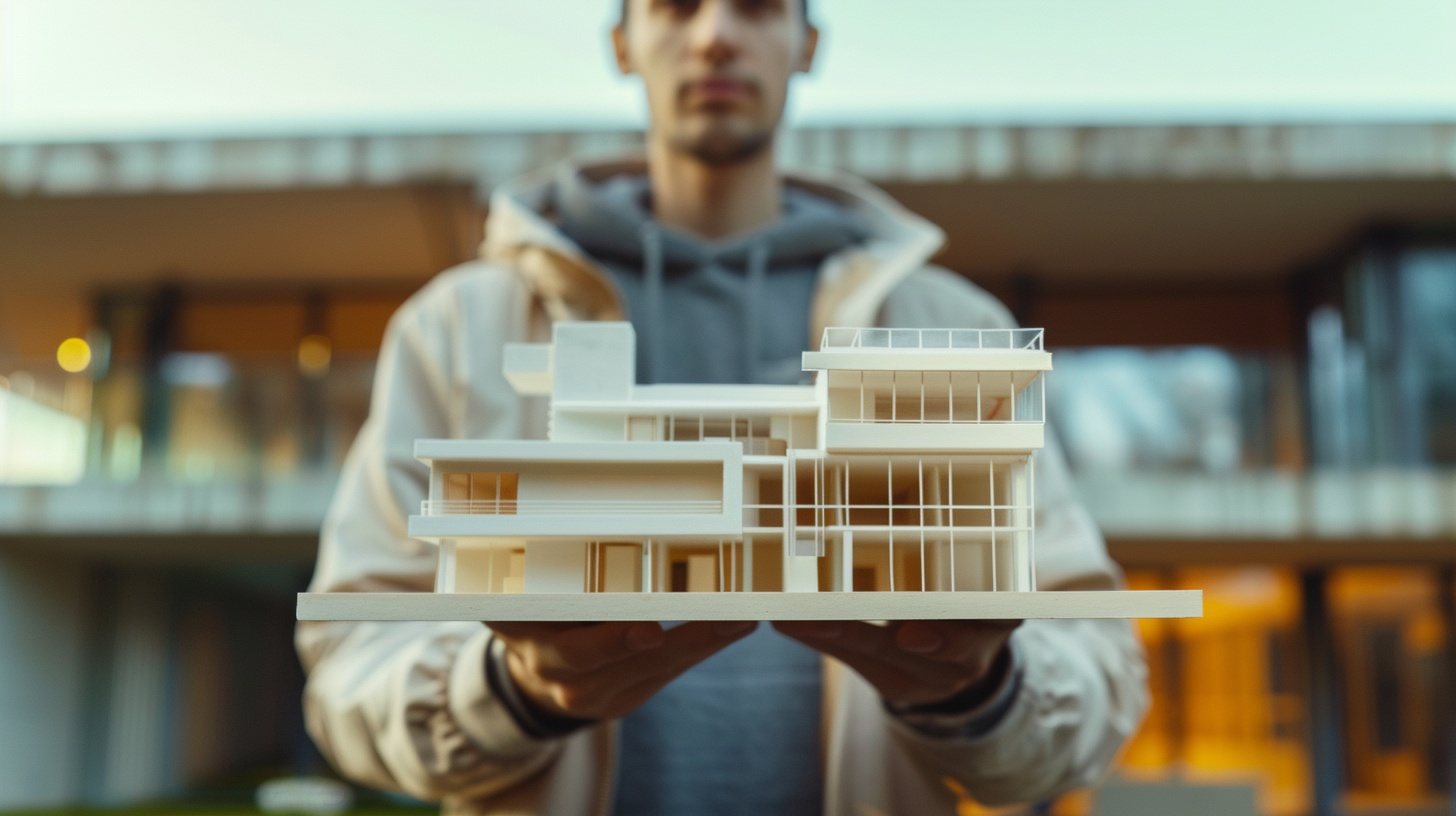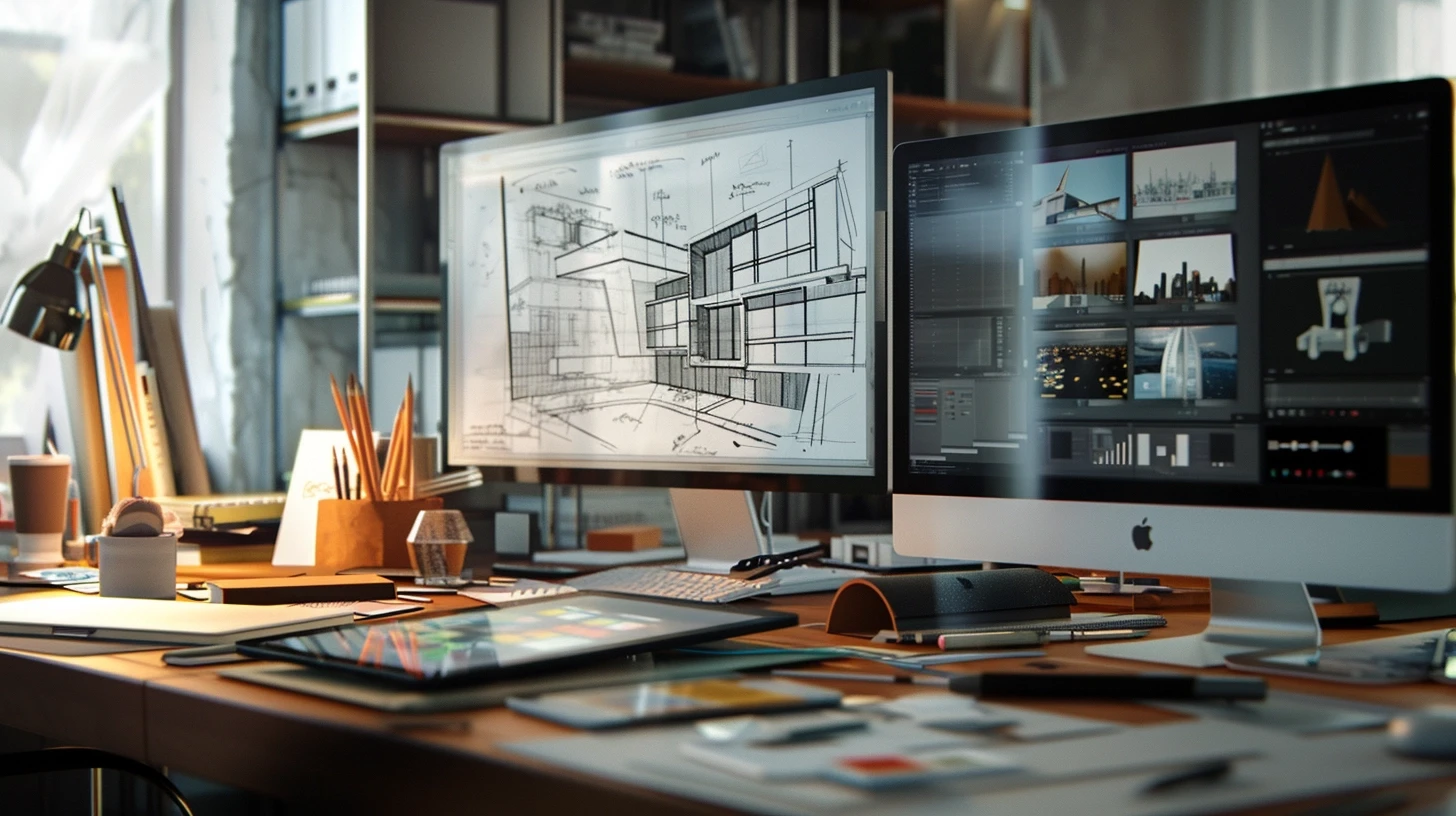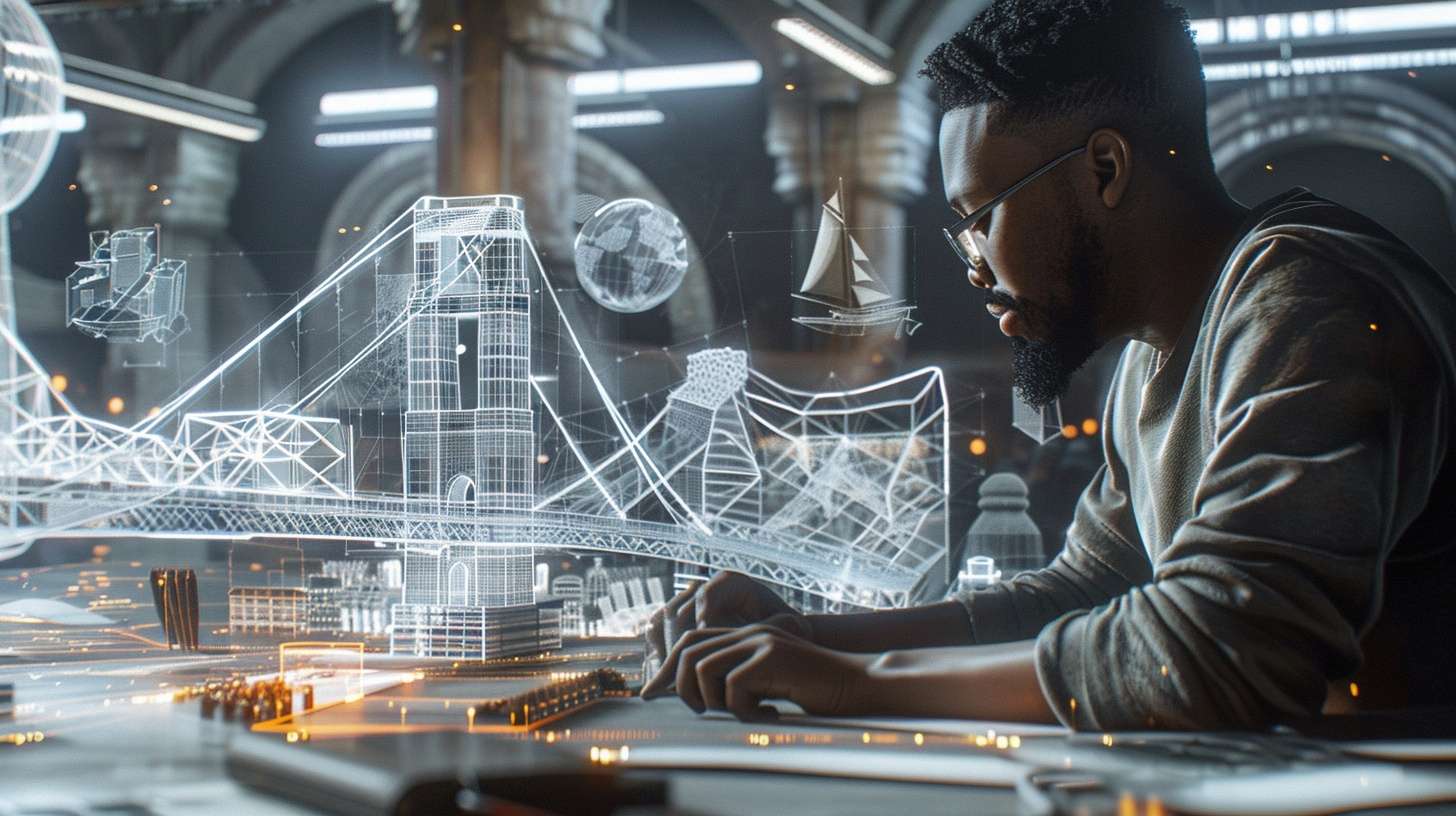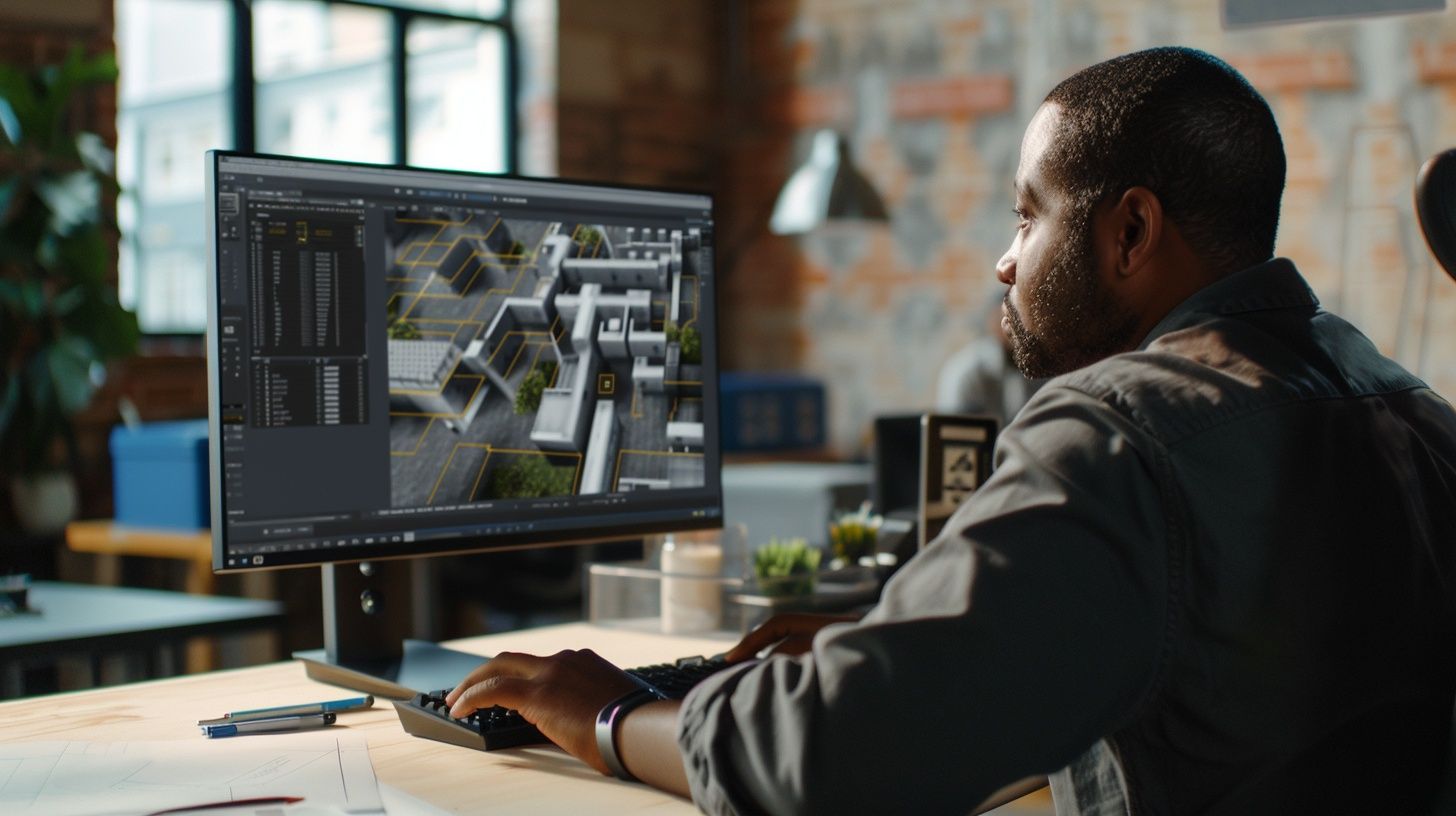
The Impact of Technology on Architectural Design and Construction

In the dynamic realm of architecture, technology emerges as a pivotal force, reshaping the very essence of how we envision, design, and bring to life the built environment. This union of technology, imagination and innovation heralds a new era in architectural design, where digital advancements propel conceptual ideas into tangible edifices.
Architects now wield unprecedented foresight in their planning endeavors. Incorporating unfinished spaces and provisions for future expansion seamlessly into designs, they embrace adaptability and scalability as core tenets. The second floor no longer signifies a constraint but rather a canvas for future growth, shaped by evolving needs and technological advancements.
Impacts of Technological Shifts On Architecture
Digital Modeling and Visualization
One of the most profound shifts facilitated by technology is the introduction of sophisticated digital modeling and visualization tools. Architects now wield the prowess of 3D modeling to intricately craft designs with unparalleled detail. Augmented and virtual reality technologies further elevate this process, immersing both designers and clients into virtual realms, offering a lifelike preview long before the construction commences.
Building Information Modeling (BIM)
Building Information Modeling (BIM) represents a quantum leap in collaborative design and construction. Moving beyond conventional 3D modeling, BIM integrates crucial information about materials, costs, and project timelines. Architects, engineers, and stakeholders converge seamlessly, fostering well-informed decisions throughout every phase of the project lifecycle.
Environmental Sustainability
As global concerns mount over environmental sustainability, technology emerges as a crucial ally in the pursuit of eco-conscious architecture. Energy modeling software empowers architects to assess the environmental ramifications of design choices, optimizing energy efficiency and diminishing the carbon footprint of structures. Integration of green technologies further aligns architectural endeavors with environmentally friendly principles.
Smart Buildings and the Internet of Things (IoT)
Smart Buildings and the Internet of Things (IoT) are integral components of modern architectural endeavors. With IoT-powered smart building technologies, structures evolve into intelligent entities equipped with sensors and devices that optimize energy consumption, enhance occupant comfort, and monitor performance in real-time. The outcome is a dynamic and responsive built environment attuned to the needs of its inhabitants.
Role of Technology in Architectural Design
In dissecting the profound impact of technology on architectural design and construction, it’s essential to delve deeper into its multifaceted roles and influences. Beyond the glossy surface of digital advancements lies a nuanced landscape where innovation intersects with tradition, reshaping the very fabric of architectural practice.
Embracing Technological Advancements
From the intricate intricacies of 3D modeling to the collaborative prowess of BIM, architects navigate a digital terrain where precision and efficiency reign supreme. Digital tools not only streamline the design process but also foster enhanced communication and coordination among project stakeholders. This digital revolution empowers architects to transcend conventional boundaries, pushing the envelope of creativity and ingenuity.
Sustainability as a Driving Force
Amidst growing environmental concerns, technology emerges as a beacon of hope in fostering sustainable architectural practices. Energy-efficient building materials, passive solar design strategies, and renewable energy systems are instrumental in crafting buildings that minimize environmental impact and maximize resource efficiency. Harnessing the power of technology, architects champion a greener, more sustainable built environment for future generations.
Human-Centric Design in the Digital Age
Despite the influx of digital technologies, the essence of architectural design remains deeply rooted in human experiences and aspirations. Technology serves as a facilitator, augmenting the architect’s innate creativity and intuition rather than supplanting it. The human touch, coupled with technological prowess, ensures that architectural endeavors resonate with the needs and desires of the communities they serve.
Balancing Innovation with Tradition
While technology propels architectural practice into uncharted territories, it’s imperative to strike a delicate balance between innovation and tradition. The timeless principles of design and craftsmanship continue to underpin architectural endeavors, even as digital tools revolutionize the way we conceive and construct buildings. By marrying tradition with innovation, architects honor the rich legacy of the past while embracing the limitless possibilities of the future.
How Architects Can Embrace Innovation in Architectural Practice
Empowering Architects Through Digital Tools
The proliferation of digital tools and technologies empowers architects to transcend conventional limitations, unleashing their creative potential on a global scale. From parametric design software to advanced simulation tools, architects harness the power of technology to explore new design possibilities, optimize building performance, and streamline project workflows. By embracing these digital tools, architects unlock new avenues for innovation and creativity, pushing the boundaries of what’s possible in architectural design.
Fostering Collaboration and Communication
Technology serves as a catalyst for collaboration and communication, bridging the gap between architects, engineers, contractors, and clients. Through platforms like BIM and cloud-based project management systems, stakeholders collaborate in real-time, sharing insights, feedback, and updates seamlessly. This culture of collaboration not only enhances project efficiency but also fosters a sense of shared ownership and accountability among all parties involved. By leveraging technology to facilitate collaboration, architects cultivate stronger relationships with their clients and partners, ensuring the successful realization of their vision.
Embracing Sustainable Design Practices
In an era of increasing environmental awareness, architects are called upon to prioritize sustainability in their design practices. Technology plays a pivotal role in this endeavor, enabling architects to integrate sustainable design principles seamlessly into their projects. From passive design strategies to renewable energy systems, architects leverage technology to optimize building performance, minimize environmental impact, and enhance occupant comfort. By embracing sustainable design practices, architects not only reduce their carbon footprint but also contribute to the creation of healthier, more resilient built environments for future generations.
Final Word
As we look ahead to the future, the role of technology in architectural design and construction will only continue to grow in significance. By embracing innovation, fostering collaboration, and prioritizing sustainability, architects can pioneer a new frontier in architectural practice, shaping a built environment that is not only aesthetically stunning but also socially responsible and environmentally sustainable.
At Designs Boss, we are committed to embracing the transformative power of technology in architectural design and construction. If you’re ready to get started on your architectural planning journey and explore the endless possibilities that technology has to offer, we invite you to contact us today. Together, let’s pioneer the future of architectural design and build a world that inspires, enriches, and sustains us all.
Latest

What Makes a Good Architectural University

What Are The Most Beautiful Bridges Ever Designed

